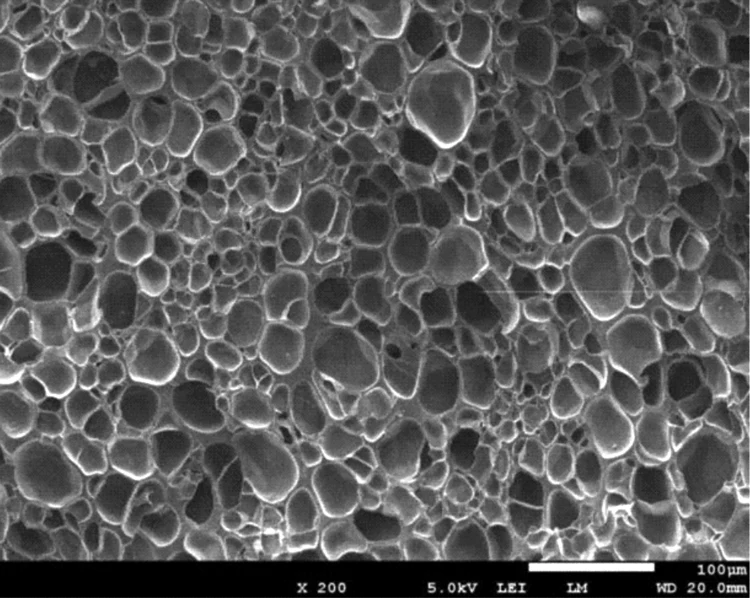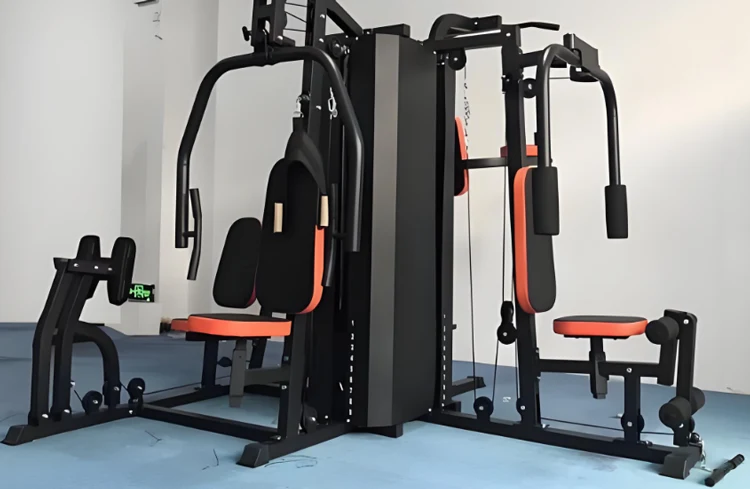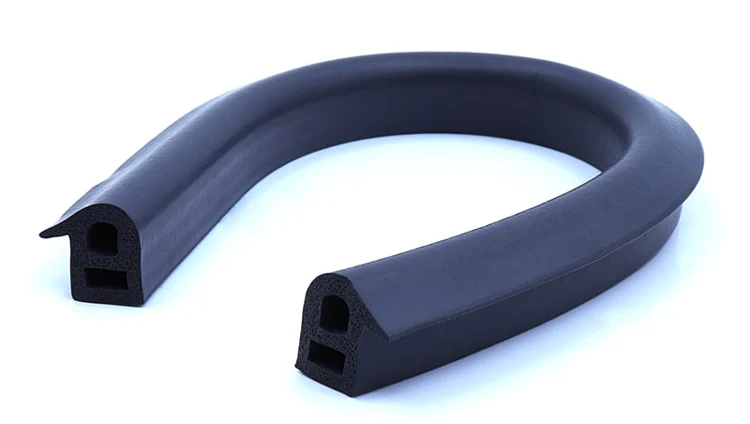I. Introduction : Pourquoi faire la distinction entre le caoutchouc mousse et le caoutchouc éponge ?
Si vous avez déjà parcouru des catalogues de matériaux ou discuté de composants en caoutchouc avec des fournisseurs, vous avez probablement rencontré les termes "caoutchouc mousse" et "caoutchouc éponge" utilisés de manière interchangeable. Cette confusion n'est pas seulement linguistique : elle peut conduire à de graves erreurs d'approvisionnement, qui se traduisent par des performances inadaptées, des coûts plus élevés, voire une défaillance du produit.
En tant que spécialiste des achats, j'ai vu des entreprises perdre du temps et de l'argent à s'approvisionner en matériaux inadaptés, simplement parce que ces deux termes se ressemblent. En réalité, le caoutchouc mousse et le caoutchouc éponge diffèrent considérablement en termes de structure, de méthodes de fabrication, de caractéristiques de performance et d'applications.
C'est exactement la raison pour laquelle j'ai écrit cet article.
Dans ce guide, je décrirai les différences réelles entre le caoutchouc mousse et le caoutchouc éponge.-Les matériaux d'isolation et de calage sont des produits très diversifiés, depuis les définitions et les techniques de production jusqu'aux caractéristiques structurelles, en passant par les domaines d'application et les références en matière de performances. Que vous recherchiez des matériaux pour l'isolation, l'étanchéité, l'amortissement des vibrations ou le rembourrage, la compréhension de ces distinctions vous aidera à prendre des décisions plus intelligentes et plus rentables.
Examinons les principes fondamentaux et remettons les pendules à l'heure.
II. Définitions et terminologie Origines
Avant de plonger dans les comparaisons techniques, il est essentiel de comprendre ce que signifient réellement les termes "caoutchouc mousse" et "caoutchouc éponge" et d'en connaître l'origine.
Qu'est-ce que le caoutchouc mousse ?
Le caoutchouc mousse désigne généralement une vaste catégorie de matériaux moussés à base de polymères créés par moussage physique ou chimique. Le terme est couramment utilisé pour décrire des matériaux flexibles fabriqués à partir de :
- Polyuréthane (PU) - largement utilisés pour l'amortissement et l'isolation.
- EVA (éthylène-acétate de vinyle) - connu pour son élasticité et sa résistance aux chocs.
- Polyéthylène (PE) - apprécié pour sa légèreté et sa résistance à l'eau à cellules fermées.
- Mousses à base de caoutchouc - y compris le NBR, l'EPDM et le SBR moussés, souvent utilisés dans l'isolation ou l'emballage.
Ces matériaux ont tendance à avoir des structures cellulaires plus uniformes et sont généralement produits en grandes feuilles ou en rouleaux pour faciliter le découpage à l'emporte-pièce ou le laminage.

Qu'est-ce que le caoutchouc mousse ?
Le caoutchouc éponge, quant à lui, se réfère spécifiquement aux caoutchoucs qui ont été expansés au cours du processus de vulcanisation pour créer une structure cellulaire. Les matériaux les plus courants sont les suivants :
- EPDM (éthylène-propylène-diène-monomère) - excellente résistance aux intempéries et à l'étanchéité.
- Silicone - excellent pour les applications à haute température et les applications médicales.
- CR (caoutchouc chloroprène/néoprène) - connu pour sa résistance à la flamme et sa durabilité mécanique.
- NR (caoutchouc naturel) - offre une excellente élasticité et un bon amorti.
Le caoutchouc mousse est généralement moulé ou extrudé, ce qui le rend adapté à des applications telles que les joints, les bandes d'étanchéité et l'isolation dans des géométries contraintes.
Confusion terminologique : Mousse ou éponge
En anglais, les termes "foam" et "sponge" sont souvent utilisés de manière interchangeable, en particulier dans des contextes commerciaux. Mais d'un point de vue technique et de fabrication, Le terme "mousse" désigne généralement des matières plastiques ou des caoutchoucs qui sont physiquement expansés. à l'aide de gaz ou d'agents gonflants, alors que Le terme "caoutchouc spongieux" implique une expansion chimique au cours de la vulcanisation. d'un composé de caoutchouc.
Important : Cette distinction est importante pour l'ingénierie, l'approvisionnement et le contrôle de la qualité. Le choix d'un mauvais matériau peut faire la différence entre un joint fiable et une fuite désastreuse.
III. Comparaison des procédés de fabrication
Il est essentiel de comprendre les différences de fabrication entre le caoutchouc mousse et le caoutchouc éponge pour apprécier leurs variations structurelles et de performance.
1. Techniques de moussage : Physique et chimique
- Caoutchouc mousse :
Le caoutchouc mousse est généralement produit en utilisant agents gonflants physiques ou chimiques qui dilatent le matériau de base pendant la phase de chauffage. Le moussage physique implique l'injection de gaz comme le CO₂ ou l'azote dans le polymère, tandis que le moussage chimique libère des gaz par l'intermédiaire d'additifs lors de la réaction du polymère. - Caoutchouc éponge :
Le caoutchouc éponge, en particulier les types à base de caoutchouc tels que l'EPDM ou le silicone, utilise agents gonflants chimiques pendant vulcanisation (durcissement). Cela crée des bulles de gaz à l'intérieur de la matrice de caoutchouc pendant qu'elle durcit, formant une structure cellulaire stable et résiliente.
Principale différence : La mousse de caoutchouc est généralement formée lors de l'expansion du polymère, tandis que le caoutchouc spongieux est créé par l'expansion du caoutchouc lors de la vulcanisation.
2. Utilisation des moules : Formage en feuille ou sur mesure
- Caoutchouc mousse :
La mousse de caoutchouc est généralement transformée en moules pour gros blocs ou extrudé en feuilles et en rouleaux. Il est ensuite découpé à l'emporte-pièce ou laminé en fonction de l'application. - Caoutchouc éponge :
Le caoutchouc mousse est généralement extrudés en profilés ou moulés dans des formes complexes en 3DIl est donc particulièrement adapté aux applications de précision exigeant une précision dimensionnelle et des propriétés de compression constantes. Il convient donc parfaitement aux applications de précision exigeant une exactitude dimensionnelle et des propriétés de compression constantes.
3. Formation de la structure cellulaire
- Caoutchouc mousse :
Les cellules du caoutchouc mousse peuvent être ouvert ou ferméLes cellules ouvertes permettent la circulation de l'air et de l'eau, tandis que les cellules fermées améliorent l'isolation et l'étanchéité. Les cellules ouvertes permettent à l'air et à l'eau de circuler, tandis que les cellules fermées renforcent l'isolation et l'étanchéité. - Caoutchouc éponge :
Le caoutchouc éponge se caractérise le plus souvent par une structure à cellules ferméesLe produit est également plus résistant à l'eau, à la poussière et à la pénétration de l'air sous l'effet de la compression.
Citation : "Dans le caoutchouc spongieux, la structure cellulaire n'est pas une réflexion après coup, elle est intégrée dans la chimie de la vulcanisation.
IV. Comparaison des caractéristiques structurelles
Bien que le caoutchouc mousse et le caoutchouc éponge présentent tous deux des structures cellulaires, leur architecture interne et leur sensation physique sont fondamentalement différentes, affectant tout, de la façon dont ils se compriment à la façon dont ils se comportent sous pression.

1. Type et taille des pores
- Caoutchouc mousse :
Le caoutchouc mousse peut se caractériser par cellule ouverte ou à cellules fermées structures. La mousse à cellules ouvertes laisse passer l'air, l'eau et le son, ce qui la rend utile pour l'absorption du son et le rembourrage. La mousse à cellules fermées, en revanche, est plus dense et mieux adaptée à l'isolation et à la résistance à l'humidité. - Caoutchouc éponge :
Le caoutchouc éponge est principalement à cellules fermées par nature - chaque pore est encapsulé et scellé, ce qui permet d'obtenir des performances d'étanchéité supérieures. La taille des cellules est généralement plus uniforme grâce au contrôle du moussage chimique lors de la vulcanisation.
Mise en valeur : Le caoutchouc spongieux à cellules fermées est idéal pour les applications d'étanchéité où les fuites d'eau ou d'air doivent être minimisées.
2. Sensation de surface, douceur et élasticité
- Caoutchouc mousse :
Le caoutchouc mousse donne souvent l'impression d'être plus doux et plus poreux au toucher, en particulier avec les types à cellules ouvertes. Il est plus compressible et plus rebondissant, mais sa récupération et sa durabilité sont généralement moindres en cas de compression à long terme. - Caoutchouc éponge :
Le caoutchouc éponge a une une peau plus lisse sur sa surface (surtout lorsqu'il est moulé) et se sent plus dense et plus élastique. Il présente une excellente résistance à la déformation par compression et se rétablit rapidement après déformation.
3. Densité et performance de compression
- Caoutchouc mousse :
La densité varie considérablement en fonction du matériau et du procédé, mais la plupart des mousses sont des produits à base d'eau. léger (faible densité). Bien que ce soit une bonne chose pour les applications sensibles au poids, cela peut réduire la stabilité mécanique sous une charge soutenue. - Caoutchouc éponge :
Généralement une densité plus élevéeLe caoutchouc spongieux offre une plus grande intégrité structurelle. Il se comprime sous la charge mais offre une meilleure récupérationLes produits d'étanchéité sont plus faciles à utiliser, surtout dans les applications d'étanchéité qui nécessitent une déformation à long terme.
Remarque importante : Ne pensez pas qu'une faible densité est synonyme de mauvaise qualité - certains caoutchoucs spongieux de faible densité sont conçus pour une isolation ou un contrôle acoustique de haute performance.
V. Différences de performance
Choisir entre le caoutchouc mousse et le caoutchouc éponge n'est pas seulement une question de toucher ou de densité, c'est aussi une question d'adéquation entre les capacités du matériau et les besoins de l'application dans le monde réel. Voici comment leurs performances se comparent :
1. Résistance à l'eau et à la poussière
- Caoutchouc mousse :
Le caoutchouc mousse à cellules ouvertes offre une résistance limitée à l'eau et à la poussière, ce qui le rend inadapté aux applications d'étanchéité. Cependant, il n'est pas adapté aux applications d'étanchéité, mousse à cellules fermées offre des propriétés de barrière décentes, bien qu'il ne soit pas toujours fiable en cas de compression. - Caoutchouc éponge :
Grâce à son caractère intrinsèquement structure à cellules ferméesLe caoutchouc spongieux excelle dans étanchéité à l'eau et à la poussière. C'est pourquoi il est couramment utilisé dans les joints d'étanchéité des systèmes de chauffage, de ventilation et de climatisation, les joints d'étanchéité des automobiles et les boîtiers extérieurs.
À emporter : Si l'étanchéité est votre priorité, le caoutchouc spongieux à cellules fermées est le meilleur choix.
2. Résistance à la chaleur, aux intempéries et au vieillissement
- Caoutchouc mousse :
La plupart des matériaux en mousse, tels que le PU et le PE, se dégradent avec le temps lorsqu'ils sont exposés aux rayons UV, à l'ozone ou à des températures élevées. Leur stabilité à long terme est limitée à moins d'utiliser des additifs spéciaux. - Caoutchouc éponge :
Des matériaux tels que EPDM et éponge de silicone sont conçu pour les environnements extrêmesElle offre une excellente résistance à la chaleur, aux UV, à l'ozone et aux produits chimiques. L'éponge de silicone, en particulier, donne de bons résultats dans des applications allant jusqu'à 230°C (446°F).
3. Amortissement et récupération
- Caoutchouc mousse :
Les mousses à cellules ouvertes fournissent amortissement supérieur pour l'emballage, l'amortissement des vibrations et l'absorption des chocs. Cependant, ils ont souvent des propriétés de rebond plus faibles après une compression de longue durée. - Caoutchouc éponge :
Le caoutchouc éponge offre une combinaison équilibrée d'amorti et de récupération. Elle est moins "élastique" que la mousse PU, mais elle conserve sa forme et sa fonction même après des cycles de compression répétés.
4. Conductivité thermique et isolation
- Caoutchouc mousse :
Les caoutchoucs mousse à cellules fermées comme le PE sont largement utilisés pour isolation thermique en raison de leur faible conductivité. - Caoutchouc éponge :
Les caoutchoucs éponges EPDM et silicone offrent également excellente isolation thermiquenotamment dans les cas de températures élevées ou d'isolation électrique.
Conseil rapide : Pour l'isolation à haute température ou les applications ignifuges, le caoutchouc spongieux (en particulier le silicone) est souvent la seule option viable.
VI. Scénarios d'application typiques
Différentes industries font appel au caoutchouc mousse et au caoutchouc éponge pour des raisons très diverses. Voyons quelles sont leurs utilisations les plus courantes et pourquoi elles sont choisies.
| Caoutchouc mousse | Caoutchouc éponge |
|---|---|
| Calage de l'emballage | Etanchéité aux intempéries (éponge EPDM) |
| Isolation acoustique (mousse PU) | Isolation haute température (éponge de silicone) |
| Tapis et matelas de sport | Joints ignifugés (éponge CR) |
| Semelles intérieures (mousse EVA) | Joints de porte automobile |
| Contrôle léger des vibrations | Bandes d'étanchéité à la poussière et à l'humidité |
Le caoutchouc mousse en action
La mousse de caoutchouc - en particulier le PU et l'EVA - est le matériau de prédilection pour la fabrication d'objets en caoutchouc. les produits d'emballage, de sport et de confort pour les consommateurs. Par exemple, dans l'industrie électronique, les inserts en mousse de PU découpée à l'emporte-pièce protègent les composants délicats. Dans le domaine de la chaussure, la mousse EVA confère aux chaussures un amorti léger et une grande souplesse.
Industries utilisant couramment le caoutchouc mousse :
- Produits de consommation
- Emballage et logistique
- Matériel de sport et de remise en forme
- Électronique

Le caoutchouc éponge en action
Le caoutchouc mousse brille là où durabilité, résistance aux intempéries et étanchéité sont essentiels. L'éponge EPDM, par exemple, est largement utilisée dans les secteurs de la construction et de l'automobile pour l'étanchéité des portes, des fenêtres et des conduits de chauffage, de ventilation et de climatisation. L'éponge de silicone est utilisée dans les environnements médicaux, aérospatiaux et alimentaires en raison de ses propriétés suivantes tolérance aux températures extrêmes et respect des règles de sécurité.
Industries utilisant couramment le caoutchouc mousse :
- Automobile et transport
- Bâtiment et construction
- Électronique et appareils
- Équipements médicaux et alimentaires
Aperçu : Si votre application implique l'étanchéité, l'isolation ou l'exposition à la chaleur et aux produits chimiques, le caoutchouc mousse est presque toujours la meilleure solution.

VII. Conseils pour la sélection des matériaux
Il n'est pas toujours facile de choisir entre le caoutchouc mousse et le caoutchouc éponge, surtout lorsque les exigences de performance se chevauchent. Voici comment j'aide mes clients à faire leur choix :
1. Évaluer les besoins en matière de performances clés
Posez-vous la question suivante :
- Le matériau sera-t-il utilisé pour l'étanchéité ?
→ Aller avec caoutchouc spongieux à cellules fermées (par exemple, EPDM, silicone). - La légèreté de l'amortissement ou l'absorption du bruit sont-elles plus importantes ?
→ Choisir caoutchouc mousse à cellules ouvertes (par exemple, PU, EVA). - Sera-t-il exposé à des températures élevées ou à des produits chimiques ?
→ Opter pour éponge en silicone ou Éponge EPDMLes produits de l'agriculture biologique sont réputés pour leur résistance supérieure. - Le rétablissement de la compression est-il essentiel en cas de charge à long terme ?
→ Le caoutchouc mousse offre une meilleure résistance à la compression que la plupart des types de mousse.
2. Ne pas tomber dans le piège de la faible densité
Un malentendu courant consiste à penser qu'une faible densité est synonyme de moindre qualité.
Alerte aux idées fausses : "Faible densité" ne signifie pas toujours "faible".
De nombreux caoutchoucs mousse sont conçus pour être légers et non pour être peu performants. De même, certains des caoutchoucs éponges de plus faible densité peut encore donner d'excellents résultats en cas de compression.
3. Classement au feu et conformité
Pour les applications dans le domaine du chauffage, de la ventilation et de la climatisation, des bâtiments publics ou des transports, il convient de s'assurer que le matériau répond aux normes de sécurité et de protection contre l'incendie :
- UL 94
- FMVSS 302
- REACH/RoHS
- FDA ou LFGB (pour les éponges en contact avec les aliments)
Conseil de pro : Toujours demander certificats de conformité de votre fournisseur, surtout si vous exportez vers des marchés réglementés comme l'UE ou l'Amérique du Nord.
VIII. Tableau récapitulatif des comparaisons : Vue d'ensemble de la mousse et du caoutchouc éponge
Pour vous aider à prendre des décisions rapides et éclairées, voici un résumé d'une page des principales différences entre le caoutchouc mousse et le caoutchouc éponge :
| Catégorie | Caoutchouc mousse | Caoutchouc éponge |
|---|---|---|
| Matériau Base | PU, EVA, PE, caoutchouc mousse | EPDM, Silicone, CR, NR |
| Méthode de moussage | Agents gonflants physiques ou chimiques | Expansion chimique lors de la vulcanisation |
| Formulaire type | Feuilles, blocs, rouleaux | Profilés extrudés/moulés, joints d'étanchéité |
| Structure cellulaire | Cellules ouvertes ou fermées | Principalement à cellules fermées |
| Sensation de surface | Poreux, rebondissant | Une peau plus dense, plus élastique et plus lisse |
| Résistance à l'eau et à la poussière | Modéré (si cellules fermées) ; faible (si cellules ouvertes) | Excellent (cellules fermées scellées) |
| Résistance à la température | Moyen (limité par le type de polymère) | Excellent (surtout l'éponge en silicone) |
| Récupération par compression | Bon pour un amortissement à court terme | Étanchéité et récupération supérieures à long terme |
| Applications typiques | Emballage, amortisseurs, acoustique | Bandes d'étanchéité, isolation, joints haute température |
| Conformité/Certifications | Limité, souvent non ignifugé | Répond fréquemment aux exigences UL, FMVSS, FDA et REACH. |
| Fourchette de coûts | Généralement plus faible | Généralement plus élevé (mais plus durable) |
Utilisez ce tableau lors des réunions avec les fournisseurs ou des revues de conception-Il permet de gagner du temps et d'éviter des disparités coûteuses entre les matériaux.
IX. Questions fréquemment posées (FAQ)
1. Le caoutchouc mousse peut-il remplacer le caoutchouc éponge ?
Réponse courte : En général, non.
Bien que le caoutchouc mousse puisse imiter certaines fonctions d'amortissement du caoutchouc spongieux, il ne présente souvent pas les performances d'étanchéité, de résistance à la température et de durabilité requises dans les applications industrielles. En voici un exemple, La mousse PU ne peut pas remplacer l'éponge EPDM dans un joint de porte automobile.où une exposition à long terme à la chaleur, à l'humidité et à la compression est prévue.
Règle de base : Utilisez de la mousse pour le rembourrage et de l'éponge pour l'étanchéité.
2. Quand dois-je choisir une structure à cellules fermées ?
Les structures à cellules fermées sont essentielles lorsque :
- Vous avez besoin étanche à l'eau ou à l'air l'étanchéité (par exemple, les boîtiers, le chauffage, la ventilation et la climatisation, les applications extérieures)
- La résistance à la déformation par compression est importante (par exemple, joints sous pression constante).
- L'application est exposée à l'humidité, la poussière ou les produits chimiques
Les matériaux à cellules ouvertes sont meilleurs pour le contrôle acoustique, la ventilation ou l'absorption légère des chocs.
3. Quelles sont les certifications requises en matière de sécurité incendie ou de respect de l'environnement ?
En fonction de votre application et de votre région, les certifications suivantes peuvent être nécessaires :
- UL 94 (indice d'inflammabilité) - souvent nécessaire pour les applications électriques et les appareils électroménagers
- FMVSS 302 - obligatoire pour les matériaux d'intérieur automobile
- REACH et RoHS - normes de sécurité environnementale dans l'UE
- FDA ou LFGB - nécessaire pour les caoutchoucs spongieux en contact avec les aliments comme le silicone
Conseil : Si votre produit final est exporté ou utilisé dans des industries réglementées, vérifiez toujours auprès de votre fournisseur si ses matériaux en éponge ou en mousse répondent à ces normes.
X. Conclusion et conseils pour la sélection des matériaux
La distinction entre le caoutchouc mousse et le caoutchouc éponge peut sembler subtile à première vue, mais comme vous l'avez vu, elle est importante. de graves répercussions sur les performances des produits, leur rentabilité et leur fiabilité à long terme.
Si vous recherchez des matériaux pour l'emballage, le rembourrage ou l'insonorisation, caoutchouc mousse peut être la bonne solution. Mais si votre application nécessite une étanchéité, une résistance à la température ou une conformité aux normes environnementales et de protection contre l'incendie, le caoutchouc spongieux - en particulier l'EPDM ou le silicone - est le grand gagnant.
Dernier conseil : Ne vous fiez pas uniquement aux noms des produits - vérifiez toujours la fiche technique et contrôlez la structure des pores, les performances de compression et la qualité du matériau.
Au KINSOENous sommes spécialisés dans les produits de haute performance solutions en caoutchouc spongieux adaptés aux applications exigeantes. Que vous souhaitiez développer des joints étanches, des bandes d'isolation thermique ou des profils d'étanchéité à haute résilience, nous sommes là pour vous aider. sélectionner le bon matériau, fournir des échantillons et soutenir le prototypage rapide.
Besoin d'une solution d'étanchéité, d'isolation ou de rembourrage ?
Contact pour découvrir notre gamme de produits éponge EPDM, éponge silicone, et caoutchouc moulé composants conçu pour votre secteur d'activité.
Références :


